Digital multimeters have always been essential measuring instruments for production testing engineers, R&D engineers, and electrical maintenance personnel. It is important to understand how to choose a suitable multimeter. This article will detail the options that are often overlooked when selecting a multimeter, as well as the types and selection of multimeter probes.
Factors Often Overlooked in Multimeter Selection
Multimeters generally integrate multiple functions, such as measuring current, voltage, and resistance. In the product classification of Digi-Key multimeters, selection can be made based on parameters (as shown below). There are several basic options, such as “Function” and “Display Digits,” which reflect the function and accuracy of the multimeter. I believe everyone is familiar with these, so I won’t elaborate further.

Next, we will mainly discuss the selection factors that are easily ignored.
-
Multimeter safety “levels”
A common misconception is that as long as the working voltage of the multimeter is higher than the voltage being measured, it is safe. However, it is not that simple—we must also consider sparks and accidents.
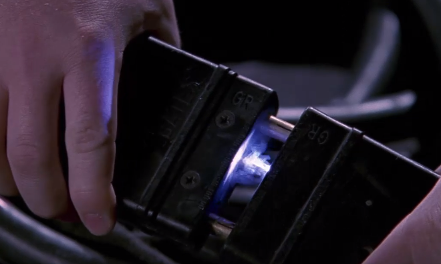
According to the definition of IEC1010-1, the electrician’s working area is divided into four levels based on risk: CAT I, CAT II, CAT III, and CAT IV.

(Source: What is the CAT (Category) Safety Level of a Multimeter?)
Each level is further subdivided based on working voltage.

Another common misconception is that the higher the rated working voltage, the safer it is. In fact, the safety of a multimeter should be evaluated in conjunction with the safety level and working voltage.
CAT levels each have their corresponding working voltage and transient voltage (as shown in the table below):
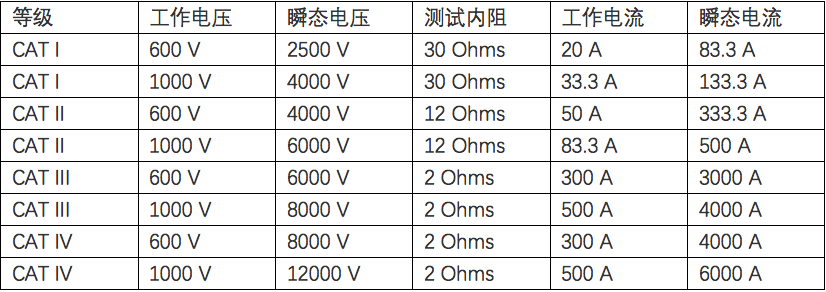
In addition to considering the rated working voltage, we must also consider the transient voltage. For example, between CAT III 600V and CAT II 1000V: as seen in the table above, they can withstand the same instantaneous voltage. However, the instantaneous current they can handle is greater for CAT III 600V than for CAT II 1000V. Therefore, a higher rated working voltage does not necessarily mean greater safety. If there are doubts during selection, opting for a higher level of protection is certainly more prudent.
-
“True RMS” vs. “Average Value”
The difference between “True RMS” and “Average Value” mainly manifests in AC signals. A “True RMS” multimeter can accurately and in real-time measure the effective value of various AC waveforms without considering waveform parameters and distortion, especially for distorted waveform signals such as square waves, triangular waves, and sawtooth waves, which can only be accurately measured by true RMS instruments.

-
“Auto Range” vs. “Manual Range”
The definitions of Auto Range and Manual Range are as follows:
– Auto Range: Automatically selects the measurement range.
– Manual Range: Manually selects the measurement range.
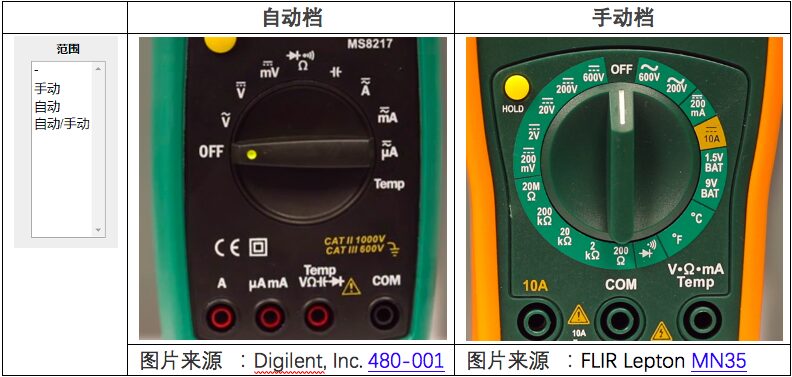
Image Source: Digilent, Inc. 480-001
Image Source: FLIR Lepton MN35
For manual range, in addition to selecting the appropriate gear based on actual usage, the measurement range must also be selected. For testing unknown currents or voltages, it is recommended to start measuring from the maximum range.
Types and Selection of Multimeter Probes
Most multimeters come with at least one set of probes. The most commonly used are test probes. The tips of the test probes resemble fine pen tips, allowing them to “probe” into narrow spaces in circuits for measurement or penetrate the insulation of wires.

(Image source: B&K Precision)
In addition to test probes, there are many other types of probes. Each type of probe has its best use corresponding to different applications, depending on the application.
Some common types of probes include:
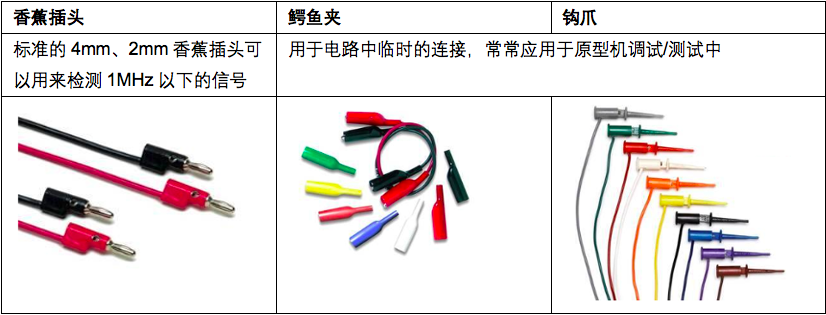
-
Examples of Multimeter Probe Applications
Alligator clips and hooks are used to test circuits, as shown in the figure below.
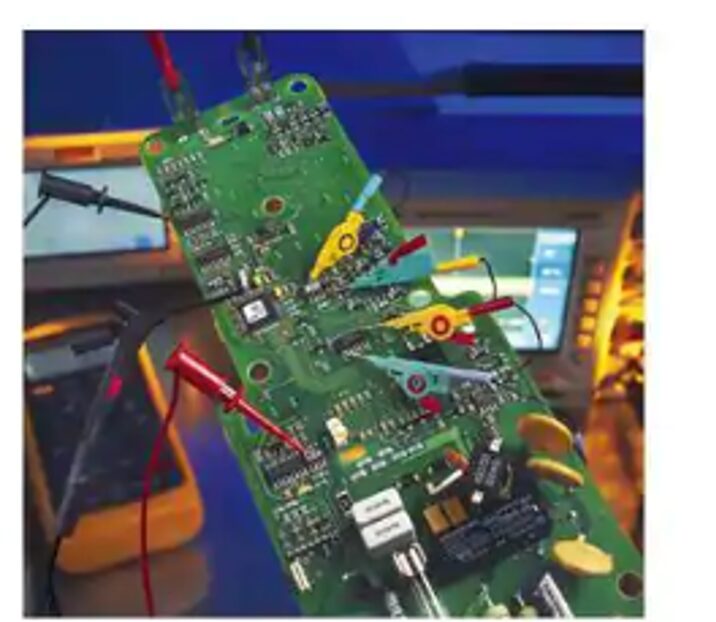
(Image and information source: Pomona Leads and Probes Training Module)
You can also visit the Digi-Key website to select suitable multimeter probe options:
-
Test Clips – Grabbers
-
Alligator Clips
-
Banana Plugs
-
Test Leads
-
Temperature Probes
For multimeters that can measure temperature, there are generally dedicated temperature probes, which are usually separate from the test leads.
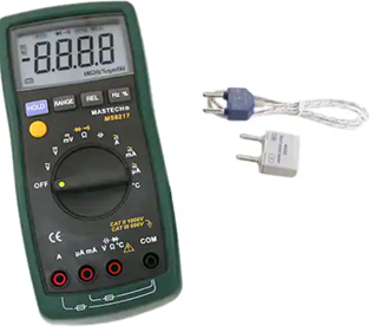
From a safety perspective, when testing voltages above 33V, it is not recommended to measure handheld applications. For measurement environments that do not require hand contact, selecting a suitable multimeter can allow for higher voltage measurements.
Summary of This Article
To do a good job, one must first sharpen their tools! As an indispensable measuring instrument for engineers, multimeters have a long service life. Choosing the right multimeter can lead to greater efficiency. On the Digi-Key website, you can conveniently select electronic components and tools based on parameters, which helps you choose the right multimeter.
For more technical information about multimeters, please click the following links, and everyone is welcome to leave comments for discussion.
-
How to Test a Seven-Segment Display
-
Understanding These Parameters Means You Can Use a Digital Multimeter
-
Measuring LEDs with a Digital Multimeter is Easy, but Many People Overlook These Two Points
-
Open Circuit or Short Circuit? How to Quickly Detect Circuit Connection Failures
-
Basic Knowledge of Multimeter Selection
-
Many People Don’t Know: Digital Multimeters Can Be Used Like This!
